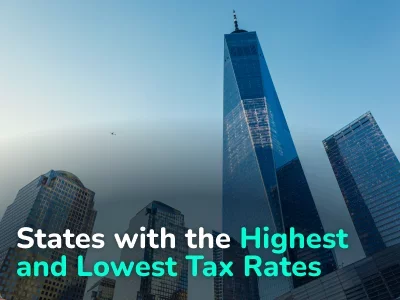
Zombie real estate in the US. What it is and how it affects the market
The number of vacant properties and so-called “zombie” properties in the U.S. continues to attract attention. This problem and other current trends in the U.S. housing market are the subject of a recent ATTOM report. We tell you the main thing.
So, there are currently 1,277,612 vacant residential properties in the United States. This represents 1.3% of the total number of properties in the country. The same statistics were recorded in the second quarter of this year.
The report also recorded an increase in the number of homes that are in the process of fulfilling mortgage obligations. There were 315,425 such properties in the third quarter of this year, a 1.3 percent increase from the second quarter of 2023. The increase is attributed to the lifting of a moratorium on bank harassment of debtors imposed at the start of the pandemic.
The report also draws attention to so-called “zombie” foreclosures. There were already about 8,800 of them in the third quarter of 2023. This is a small increase from the previous quarter, but a notable one—13.9% more than a year ago.
Zombie properties: What are they?
Zombie properties refer to properties whose homeowners are unable to make mortgage payments or property taxes. The term “zombie” implies that these properties are neither fully “alive” and in use nor officially “dead.”
Here's an example of a property moving into “zombie” status:
- A homeowner fails to make mortgage payments.
- The lender begins the foreclosure process.
- The homeowner leaves the home before the foreclosure process is complete.
- The house remains in limbo: the homeowner technically still owns the house but does not live there or care for it.
One serious problem with zombie properties is that they can fall victim to vandalism and crime, negatively impacting the overall quality of life in the neighborhood and property values.
The term “zombie real estate” was first coined in the early 2010s, during the housing crisis.
Regional Characteristics
It is important to note that “zombie” properties are not evenly distributed across the country. The greatest number of these properties are found in neighborhoods with limited financial resources, where households are more vulnerable to executive sales. For example, New York City and Miami remain the neighborhoods with the highest number of “zombie” properties.
Impact on the housing market
Despite the increase in the number of “zombie” properties, they still represent a tiny fraction of the total number of residential properties in the country—only 1.3% of the total number of residential properties. Nevertheless, this figure underscores the importance of monitoring the dynamics of executive sales and ensuring stability in the housing market.
What is an executive sale?
Executory sales are the process of selling a property by a bank or other lender when a property owner defaults on their financial obligations under a mortgage or loan.
Executive sales can be a difficult and stressful process for both the borrower and the lender. The borrower risks losing their home, while the lender seeks to recover at least some of their loss.
Author
I am responsible for editorial work. I write expert interviews and guides.

















